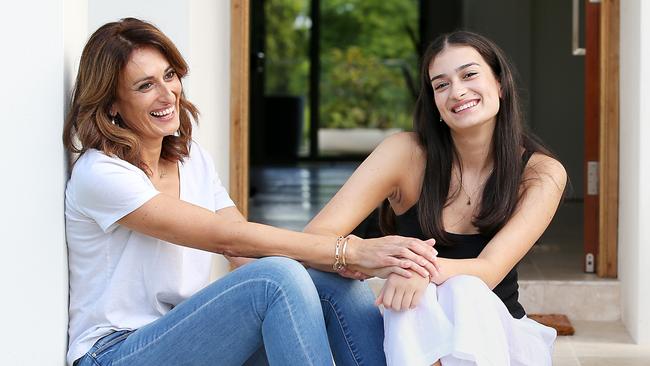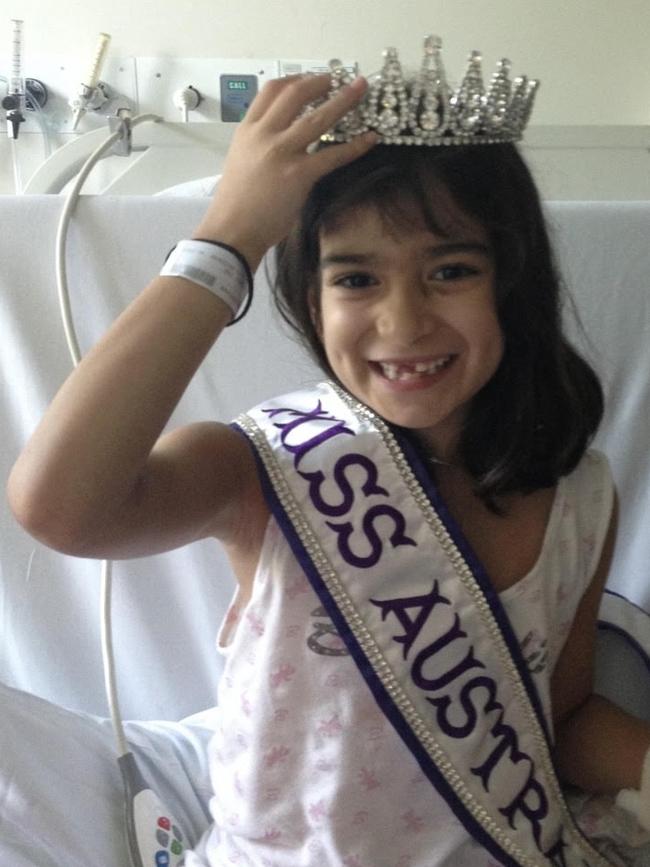One in three children with cancer could be treated using immunotherapy in world-first breakthrough
Up to a third of children with cancer are likely to be able to be treated with immunotherapy in a development that is hoped will increase kids’ chances of survival and lessen the risk of long term impacts of chemotherapy.

Up to a third of children with cancer are likely to be able to be treated with immunotherapy in future in a development it is hoped will increase kids’ chances of survival from many cancers and avoid the devastating long-term side effects of chemotherapy.
A world-first study led by the Children’s Cancer Institute has for the first time mapped the “tumour immune microenvironment” of children with cancer, identifying the existence of specialised T cells that mean the child’s immune environment could be harnessed through therapy to fight their disease.
The identification of the “gene signature” proved for the first time that up to 30 per cent of children who have solid tumours could be candidates for immunotherapy.
Australian collaborators on the study included scientists from Children’s Cancer Institute and Peter MacCallum Cancer Centre, and clinicians from children’s hospitals around the country.
“We were able to identify that just over 30 per cent of children with cancer have what’s called an immune inflamed tumour microenvironment,” said Chelsea Mayoh, leader of the Bioinformatics team at Children’s Cancer Institute, and lead author on the study. “Previously, it was thought that in children this immune microenvironment is relatively non-existent, and that immune cells were not getting into this tumour environment at all, they were completely unseen by the immune system.
“What we’ve shown is that’s not actually the case, that in 30 per cent of paediatric high-risk cancers these immune cells are getting to the tumour, and they just need to be primed (with immunotherapy) to target and kill.”
Immunotherapy is a modern form of cancer treatment that has transformed the treatment of many adults cancers, most notably melanoma. It works by harnessing the body’s own immune response to fight tumours, and carries few side effects.
Currently, many rare cancers in children cannot be treated, and the only option for kids generally is chemotherapy or radiotherapy. It carries many side-effects, some of them lifelong such as infertility.
Seventeen-year-old Giulia Petitto was lucky to survive the rare form of sarcoma she was diagnosed with at seven years old.
She was a healthy and active child until she was rushed to hospital one weekday 10 years ago with a dangerously high heart rate. Doctors quickly discovered Giulia was bleeding internally and a tumour was growing in her lungs.
“We were told when she was first admitted to hospital, she had three hours before her heart stopped,” said mother Mary-Ann. “We were told it was one of the rarest tumours, that traditional chemotherapy wouldn’t respond to it, and to pray as much as we could to find some sort of cure.”

Giulia was lucky enough to be enrolled in a clinical trial and treated successfully treated with a novel form chemotherapy, but it was an adult treatment that was hard on her body. She would vomit every day and was so immunocompromised she was barely able to go to school for most of the following year.
“As a parent whose child has endured the trauma of fighting cancer and survived brilliantly, I can attest just how critical targeted treatments and therapies are,” Ms Petitto said. “These types of therapies are less invasive, work faster and more effective in fighting this battle that no child should ever have to fight.”
In the Australian study, which is published in the prestigious journal Genome Medicine, researchers used data from 347 children with high-risk cancers participating in the Zero Childhood Cancer Program, Australia’s first precision medicine program for children with cancer, jointly led by Children’s Cancer Institute and Kids Cancer Centre, Sydney Children’s Hospital.
Across a range of solid tumours, the researchers identified a cluster of 15 genes that, when highly expressed, were correlated with T-cell infiltration of the tumour and its surrounding environment.
Together, these 15 unregulated genes form an “immune profile”, termed the Immune paediatric Signature Score, which can be used to identify those children who are potential candidates for immunotherapy.
The ZERO program is now being opened up to all children with cancer in Australia for tumour sequencing and to check if they are candidates for an immunotherapy clinical trial.
Paul Neeson from the Peter MacCallum Cancer Centre said the prospect that immunotherapy treatment would be opened up to children was exciting.
“We had hoped that the success we had seen in immunotherapy in adults would be mirrored in children but that didn’t occur,” Dr Neeson said.
“This gives us hope that we will move in the right direction.”




To join the conversation, please log in. Don't have an account? Register
Join the conversation, you are commenting as Logout